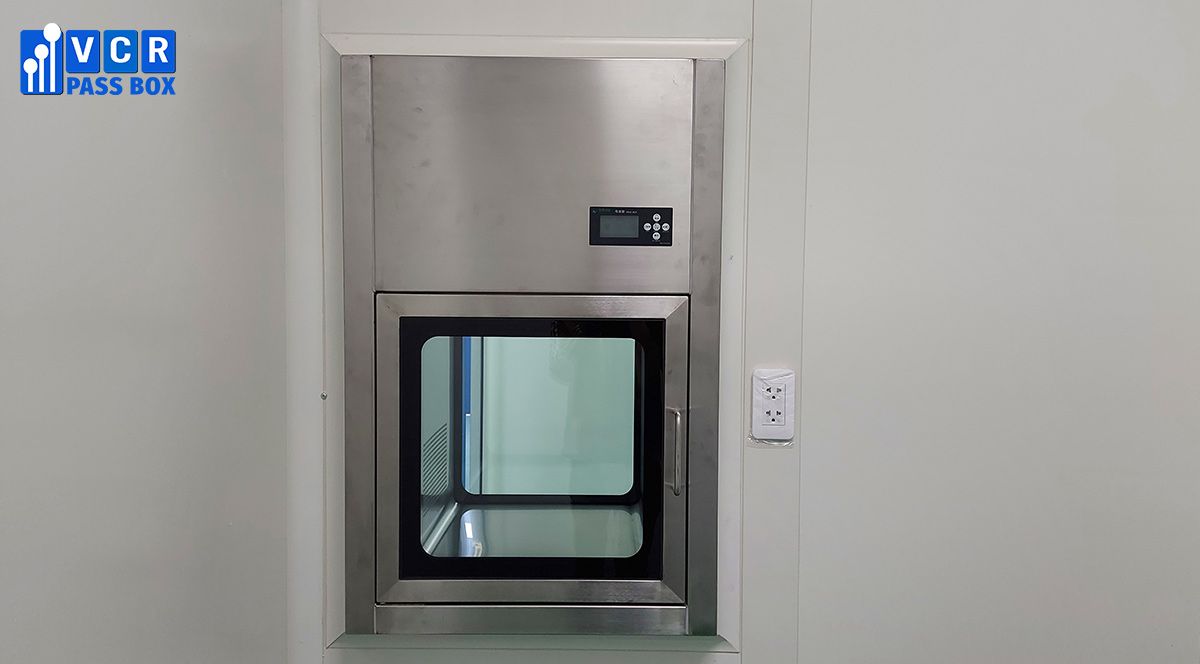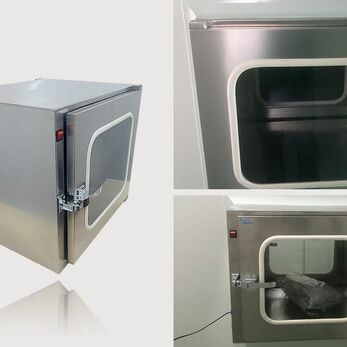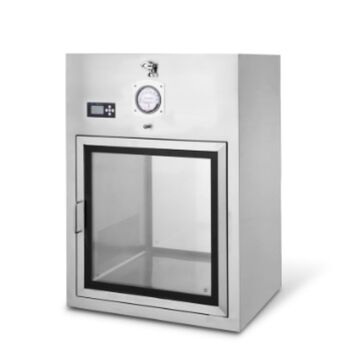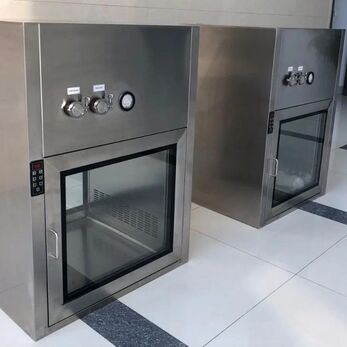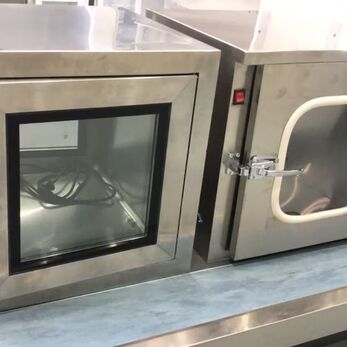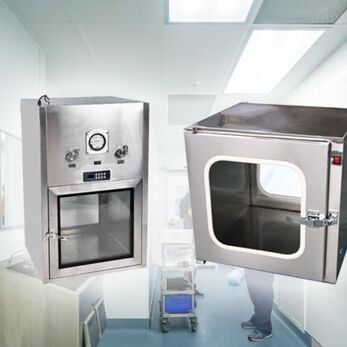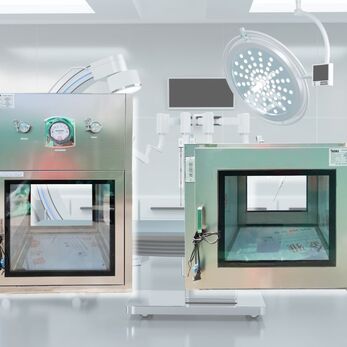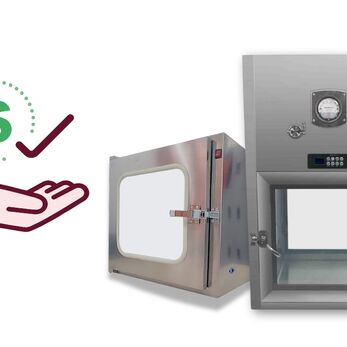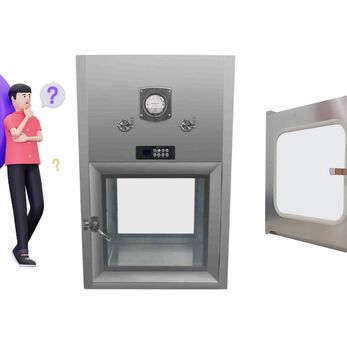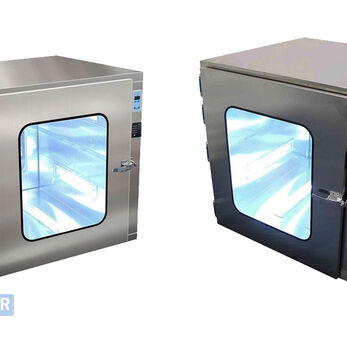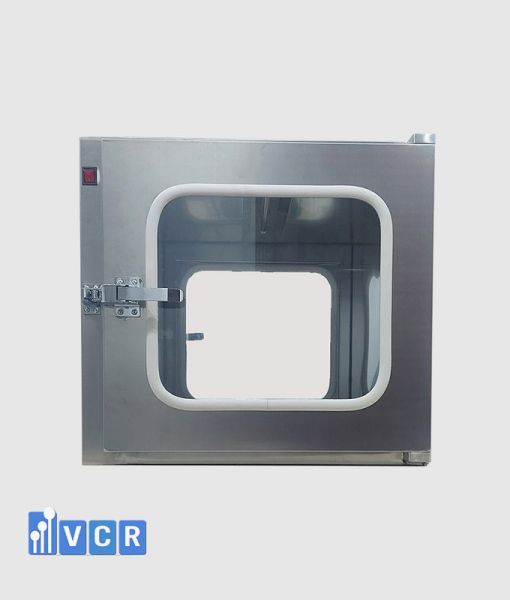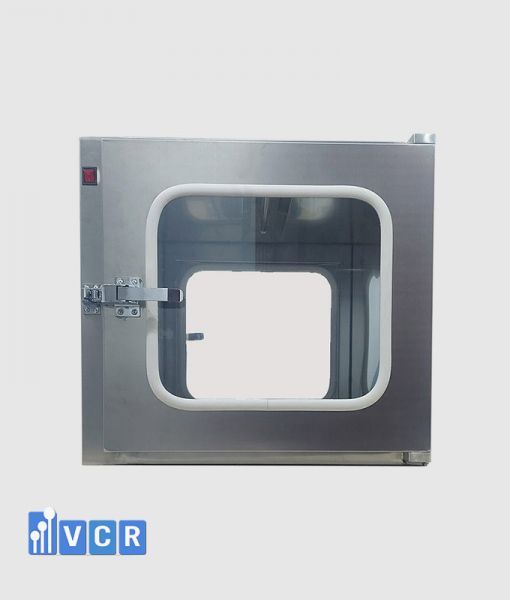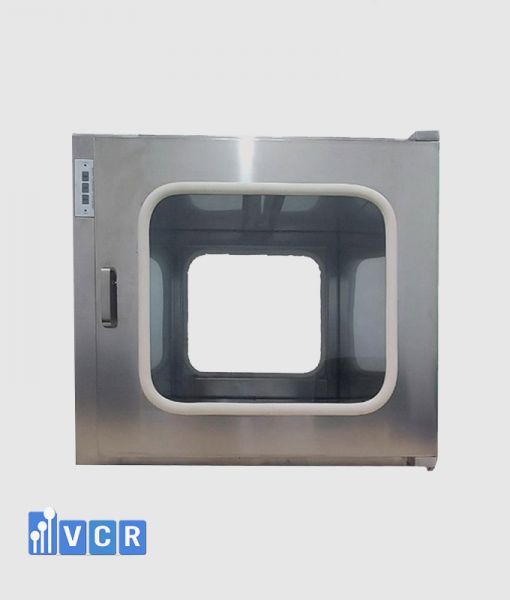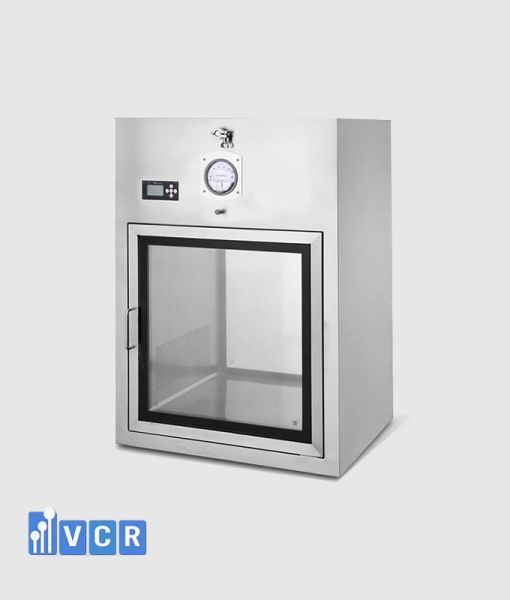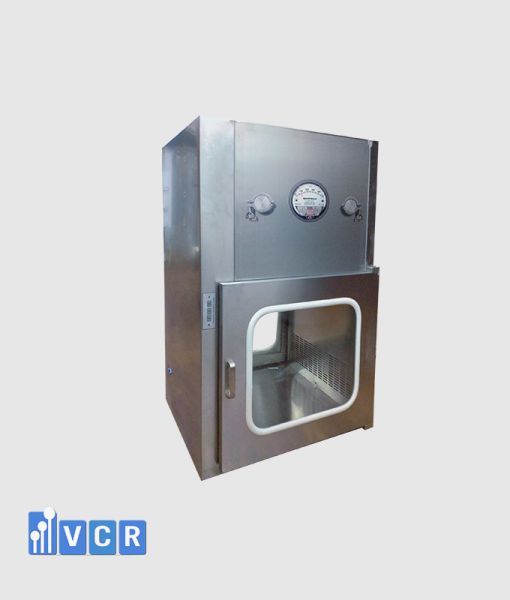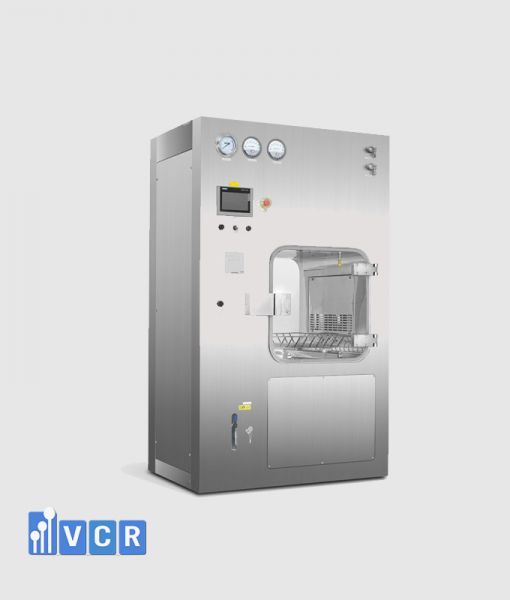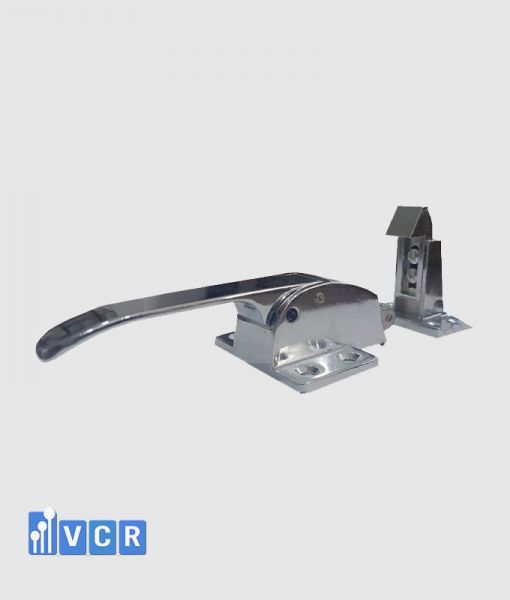A dynamic pass box serves as a pivotal device for transferring items within a controlled clean environment, minimizing the frequency of door openings.
Primarily utilized for the transfer of small materials across cleanrooms of varying cleanliness levels or between cleanrooms and non-cleanrooms, a comprehensive understanding of its structural components and operational features is essential for optimal utilization.
1. Dynamic Pass Box Structure
Comprising five integral components - Casing, DOP dust port, differential pressure gauge, DOP sampling port, control panel, and double-layer glass door - the dynamic pass box is meticulously designed to ensure effective and secure material transfer.
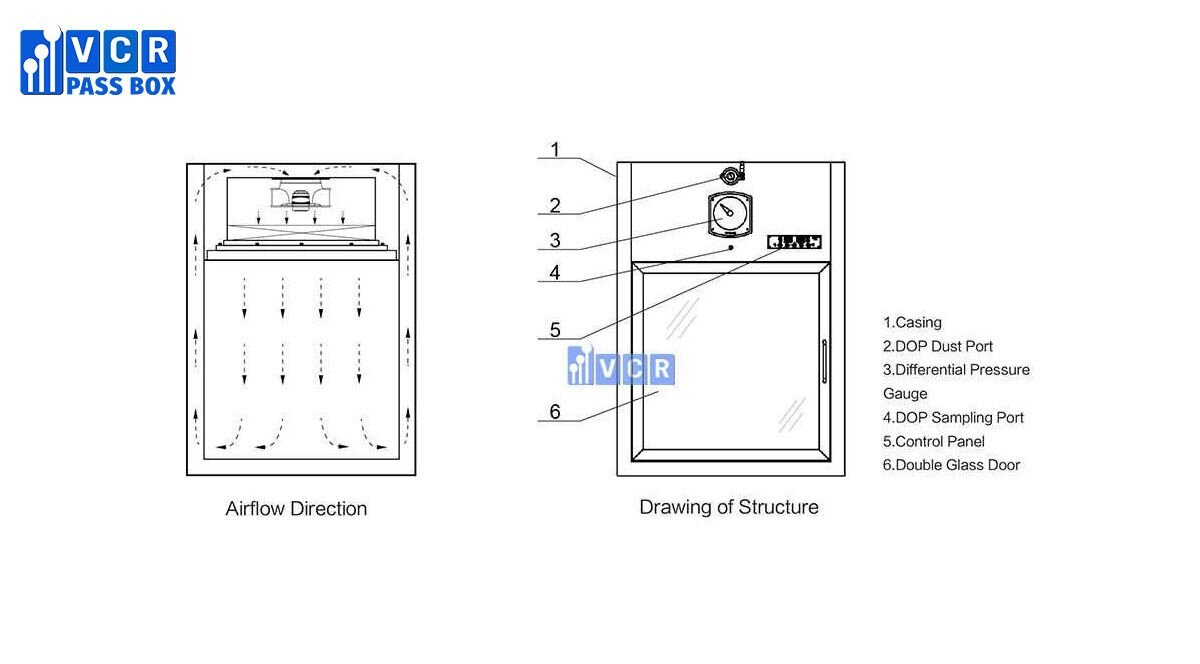
See more: Optimizing dynamic pass box
2. Outstanding Features
- Self-Cleaning Function: The pass box incorporates a self-cleaning mechanism, where a fan draws air through a HEPA filter to purify the internal environment during item transfer.
- Electronic Interlocking System: The doors employ an electronic interlocking system, ensuring that when one door is open, the other is automatically locked, preventing unauthorized access.
- Ultraviolet Disinfection Lamps: Equipped with UV lamps for disinfecting items that may not be effectively disinfected by conventional means.
See more: Optimal operation dynamic pass box
3. Working Principle
The dynamic pass box functions through a process involving a HEPA filter, a fan, and a return air grille. The air circulation is meticulously managed to maintain a purified environment around the conveyed items.
See more: Working principle of dynamic pass box
4. Design Requirements
- Cleanliness Requirements: Complies with Class B cleanliness standards.
- Seamless Design: The casing and chamber are seamlessly designed for optimal cleanliness.
- Laminar Airflow: Utilizes a laminar airflow design with vertical air movement.
- Filter Specifications: Utilizes G4 pre-filter and HEPA filter H13 or H14.
- Control System: Equipped with an on/off button, electronic interlock door button, and UV light switch.
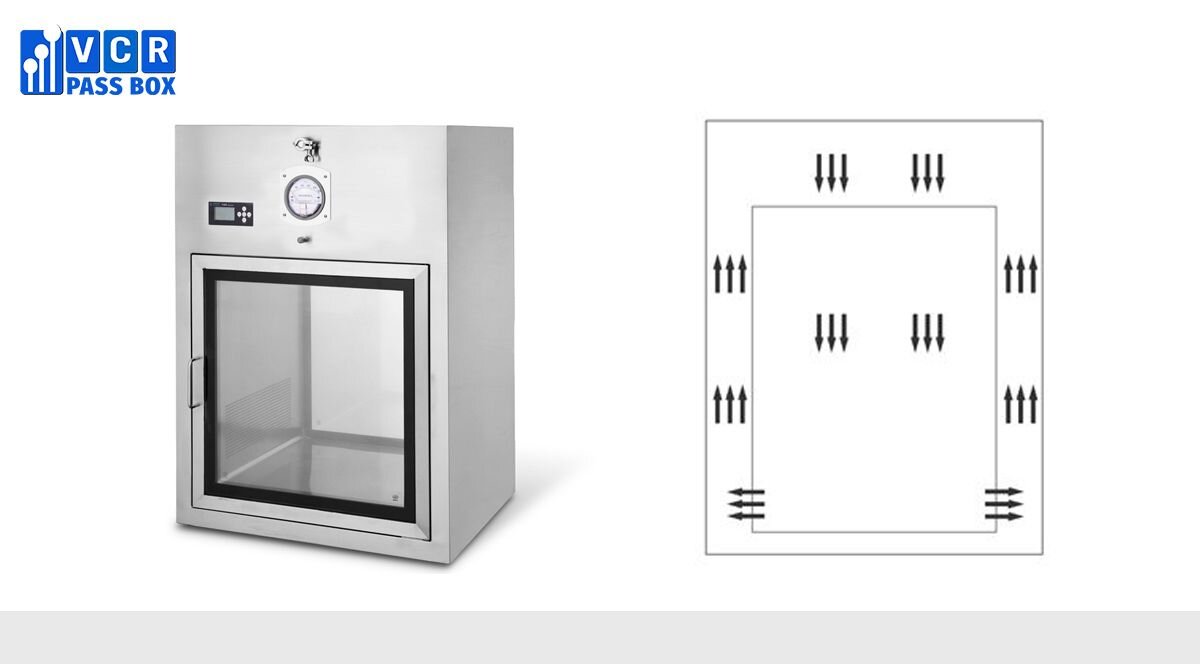
See more: Design of Pass Box
5. Material Requirements
- Surface Material: Stainless steel plate (304) with a minimum thickness of 1.5mm for both inner and outer surfaces.
- Frame Material: 304 stainless steel frame with a minimum thickness of 1.2mm.
- Glass Material: Tempered glass with a thickness greater than or equal to 8mm.
- Hepa Filter Frame: Aluminum alloy for strength and shape.
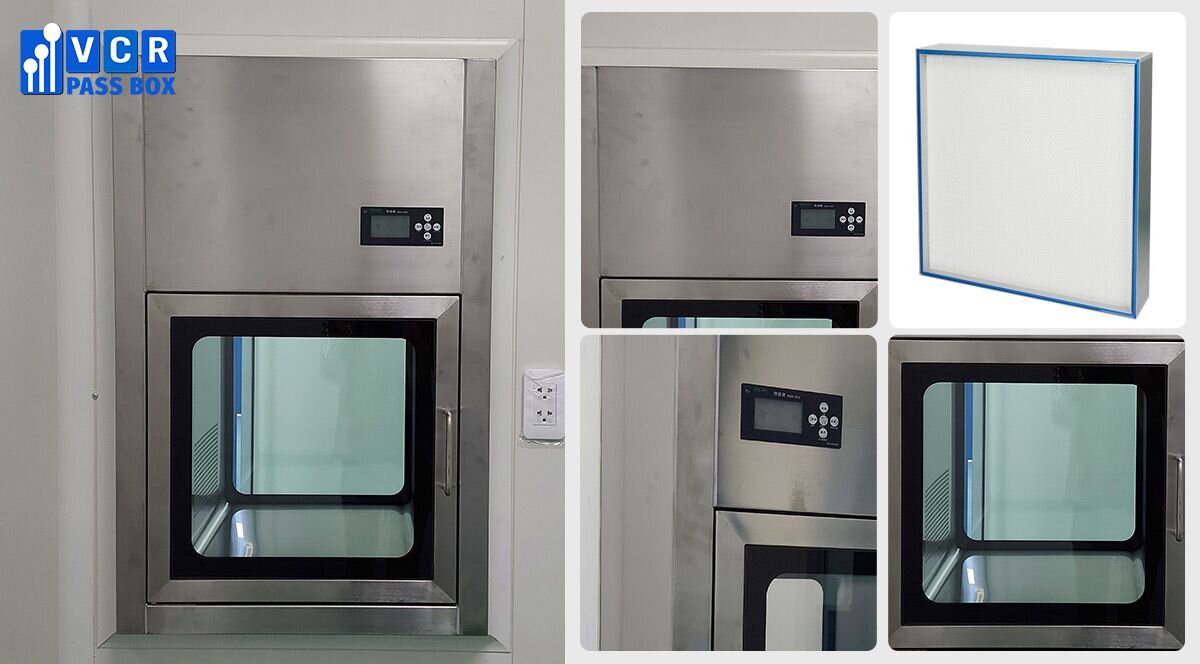
See more: How to selecting Pass Box
6. Dynamic Pass Box Qualification
- Installation Qualification (IQ): Ensures compliance with equipment purchase contract requirements.
- Operational Qualification (OQ): Validates proper operation according to established standards.
- Performance Qualification (PQ): Documents the dynamic pass box's long-term adherence to quality standards under normal manufacturing conditions.
See more: Pass box for pharmaceuticals
7. Maintenance Protocols
- Regular replacement of filters with specified intervals and shutdown during replacement.
- Periodic cleanliness measurements and thorough sterilization.
- Proper procedures for HEPA filter replacement and maintenance checks.
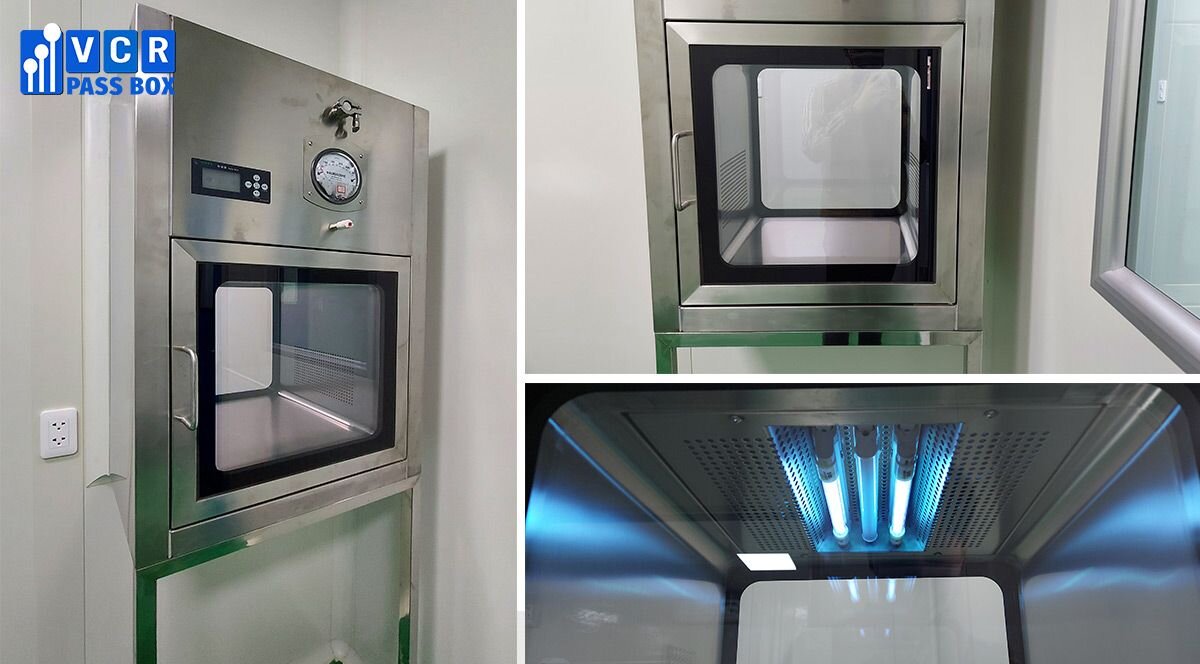
See more: Validating pass box cleanroom
8. Precautions on HEPA Filter Replacement
- Attention to proper unpacking, handling, and installation to prevent damage to the filter.
- Visual inspection for leaks before installation.
- Strict adherence to replacement steps and airflow direction.
9. Usage Precautions
- Indoor usage and storage only.
- Adequate structural support in cleanroom floors and walls.
- Caution against direct UV light exposure to the eyes.
- Prohibition of opening both sides of the door without turning off the UV lamp.
- Strict adherence to usage guidelines to avoid structural modifications.
- Disconnection of power before UV lamp replacement.
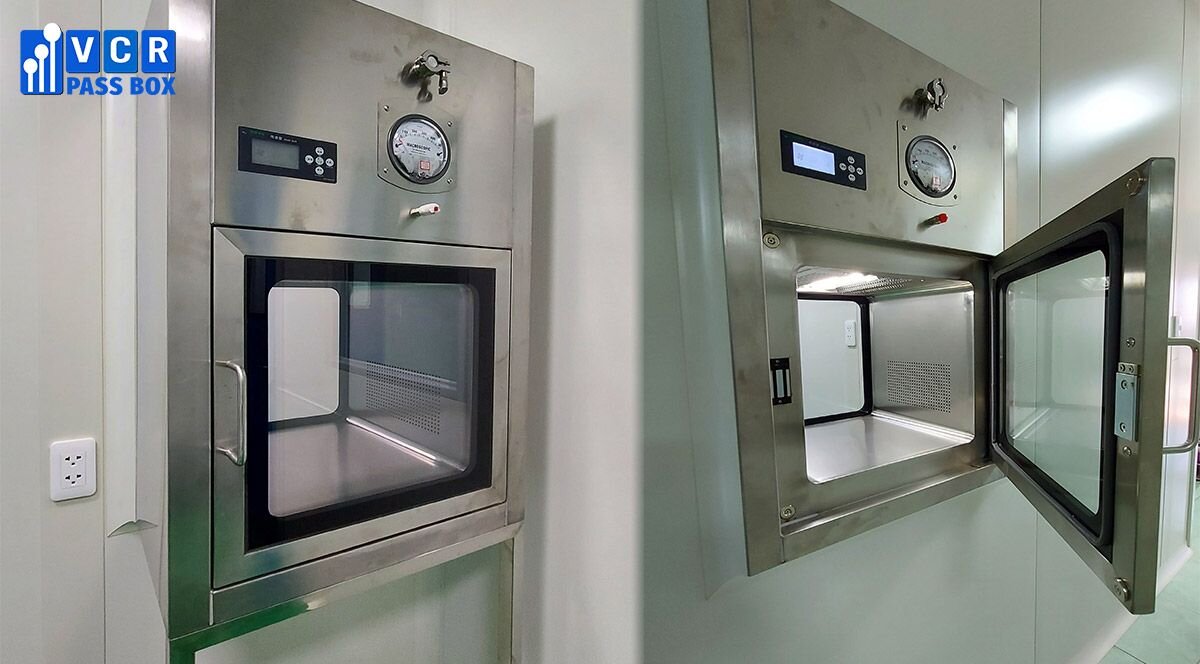
See more: Air shower pass box
Conclusion
Understanding the intricate details of dynamic pass box design, operation, and maintenance is crucial for ensuring a controlled and clean transfer environment. Implementing the outlined guidelines and precautions will contribute to the efficient and safe utilization of dynamic pass boxes in various controlled environments.




